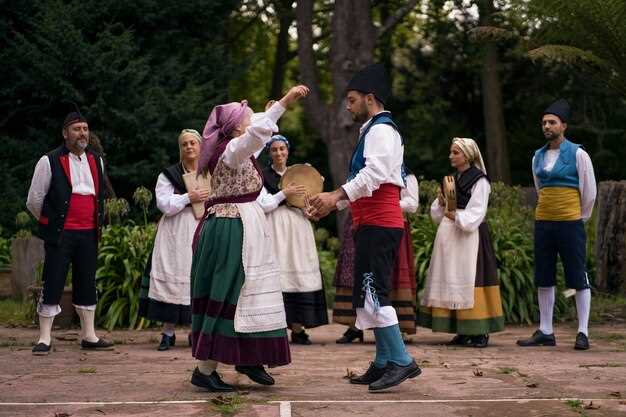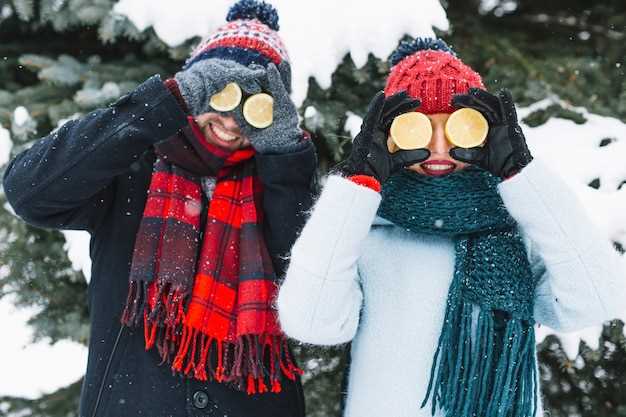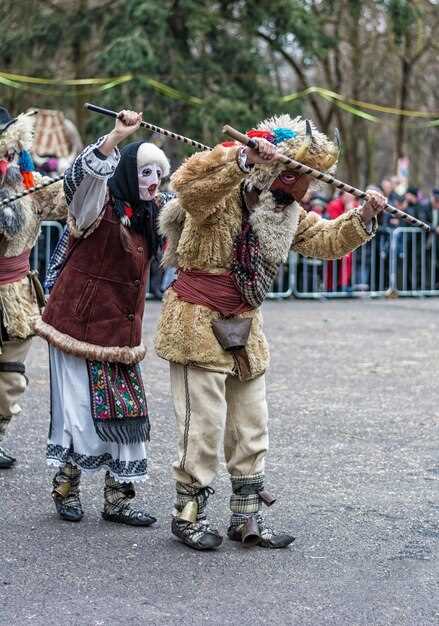
Sweden, a country known for its vibrant and diverse cultural heritage, is home to a plethora of unique customs and celebrations that captivate both locals and visitors alike. From ancient rituals steeped in history to modern festivities that reflect the dynamic spirit of the nation, Sweden offers a kaleidoscope of traditions that are as varied as the landscapes that define this Nordic gem.
Embracing the essence of Swedish identity, these customs and festivities serve as a testament to the values and beliefs cherished by the Swedish people. With a strong emphasis on community, nature, and the preservation of heritage, each celebration is an opportunity to come together, honor the past, and create lasting memories for generations to come.
As you delve into the rich tapestry of Swedish culture, you will encounter a myriad of customs that are deeply rooted in the country’s history. From the solemnity of Midsummer’s Eve, where bonfires illuminate the night sky and families gather to celebrate the longest day of the year, to the joyousness of Lucia Day, when young girls don white gowns and crown themselves with candles, Swedish traditions are a testament to the enduring spirit of the nation.
But it is not just the historical customs that define Swedish celebrations. The country’s modern festivities are equally enchanting, blending contemporary elements with age-old traditions. Whether it’s the colorful and exuberant Pride Parade that takes over the streets of Stockholm, or the exhilarating thrill of the Crayfish Party, where friends and family gather to feast on succulent seafood, Swedish celebrations are a vibrant reflection of the nation’s progressive and inclusive values.
Midsummer: Celebrating the Longest Day of the Year
Midsummer is a joyous occasion that marks the celebration of the longest day of the year. It is a time when people come together to revel in the beauty of nature and the abundance of sunlight. This festive event is filled with traditions and customs that have been passed down through generations, creating a sense of unity and connection to the past.
One of the key elements of Midsummer is the gathering of friends and family. People from all walks of life come together to enjoy the festivities, creating a vibrant and lively atmosphere. The day is filled with laughter, music, and dancing, as everyone joins in the merriment. It is a time to let go of worries and embrace the joyous spirit of the season.
A central aspect of Midsummer is the decoration of the surroundings. Homes and public spaces are adorned with flowers and greenery, creating a picturesque scene that reflects the beauty of the natural world. The traditional maypole, a tall pole decorated with flowers and ribbons, stands as a symbol of fertility and abundance. Dancing around the maypole is a cherished tradition, bringing people together in a joyful display of unity.
Food also plays a significant role in Midsummer celebrations. Traditional dishes such as pickled herring, new potatoes, and strawberry cake are enjoyed by all. These delicacies are often prepared using fresh, seasonal ingredients, adding to the sense of connection with nature. Sharing a meal with loved ones is a cherished tradition that brings people closer together.
Midsummer is not only a celebration of the longest day of the year but also a time to honor ancient customs and beliefs. It is a reminder of the importance of nature and the cycles of life. Through its traditions and festivities, Midsummer creates a sense of community and belonging, allowing people to come together and celebrate the beauty of the world around them.
| Key Elements of Midsummer |
|---|
| Gathering of friends and family |
| Decoration of surroundings with flowers and greenery |
| Dancing around the maypole |
| Enjoying traditional dishes |
| Honoring ancient customs and beliefs |
Lucia Day: Embracing the Festival of Lights

Lucia Day, a cherished event in Sweden, is a joyous celebration that revolves around the concept of light. This festival, which takes place on December 13th, is a time for Swedes to come together and embrace the beauty and warmth that light brings. It is a day filled with traditions, music, and the enchanting presence of Lucia, a symbol of hope and brightness.
During Lucia Day, the darkness of winter is illuminated by the glow of candles and the radiance of smiles. People gather in homes, schools, and churches to honor this special occasion. The highlight of the festivities is the Lucia procession, where a young girl is chosen to portray Lucia, wearing a crown of candles on her head. She leads a group of girls, all dressed in white robes, as they sing traditional songs and bring light to the darkness.
The Lucia procession is not the only element that makes this day extraordinary. It is also a time for indulging in delicious treats. Saffron buns, known as “lussekatter,” are a popular delicacy during Lucia Day. These golden pastries, flavored with saffron and shaped like cats, bring a touch of sweetness to the celebration. Additionally, gingerbread cookies and mulled wine are often enjoyed, adding to the festive atmosphere.
Furthermore, Lucia Day is an opportunity for charitable acts and giving back to the community. Many schools and organizations organize charity events and fundraisers during this time, aiming to spread light and warmth to those in need. It is a reminder of the importance of compassion and generosity, particularly during the holiday season.
| Key Elements of Lucia Day |
|---|
| Lucia procession |
| Saffron buns |
| Gingerbread cookies |
| Mulled wine |
| Charitable acts |
Lucia Day is a cherished Swedish tradition that embodies the spirit of light and togetherness. It is a time to embrace the beauty of the festival of lights, indulge in delicious treats, and spread kindness to others. This celebration brings warmth and joy to the cold winter days, reminding us of the power of light and the importance of coming together as a community.
Crayfish Party: Indulging in a Traditional Seafood Feast
Immerse yourself in the delightful Swedish tradition of the Crayfish Party, where locals and visitors come together to indulge in a delectable seafood feast. This festive event, deeply rooted in Swedish culture, offers a unique opportunity to savor the flavors of the sea and enjoy the company of friends and family.
During a Crayfish Party, the star of the show is undoubtedly the crayfish, also known as crawfish or freshwater lobsters. These small crustaceans are typically boiled and seasoned with a variety of spices, creating a mouthwatering delicacy. The vibrant red color of the crayfish shells adds to the visual appeal of the feast, making it a feast for the eyes as well as the taste buds.
As you gather around the table, you’ll find yourself surrounded by laughter and joy, as the Crayfish Party is a celebration of togetherness and camaraderie. The atmosphere is filled with merriment, as guests don paper hats and bibs, ready to crack open the crayfish shells and savor the succulent meat inside. It’s a messy affair, but one that brings people closer together as they bond over shared culinary experiences.
Accompanying the crayfish are an array of traditional Swedish dishes, such as Västerbotten cheese, crispbread, and dill-infused sauces. These accompaniments complement the flavors of the crayfish, creating a harmonious blend of tastes that will leave you craving for more. To wash it all down, aquavit, a traditional Scandinavian spirit, is often served, adding a touch of warmth and cheer to the festivities.
The Crayfish Party is not just about the food, but also about embracing the Swedish spirit of enjoying life to the fullest. It’s a time to let loose, sing traditional songs, and engage in lively conversations. The evening is filled with laughter, storytelling, and the clinking of glasses, creating memories that will last a lifetime.
So, if you find yourself in Sweden during crayfish season, don’t miss the opportunity to partake in this beloved tradition. Indulge in a traditional seafood feast, immerse yourself in the lively atmosphere, and create unforgettable memories with friends and loved ones. The Crayfish Party is a true celebration of Swedish culture and a feast for all the senses.
Walpurgis Night: Embracing the Arrival of Spring with Bonfires and Merriment
As the cold winter months give way to the vibrant colors and warmth of spring, the Swedes have a unique way of celebrating the changing seasons. Walpurgis Night, also known as Valborgsmässoafton in Swedish, is a traditional festival that takes place on the evening of April 30th each year. This lively event is marked by bonfires, singing, dancing, and a sense of joyous anticipation for the arrival of spring.
Walpurgis Night holds deep historical and cultural significance in Sweden. It is named after Saint Walpurga, an English missionary who was canonized on May 1st, and the festivities are believed to have pagan roots that predate Christianity. The celebration is a fusion of ancient fertility rituals and Christian traditions, creating a unique blend of customs that have been passed down through generations.
One of the most iconic elements of Walpurgis Night is the lighting of bonfires. These bonfires symbolize the banishment of winter and the welcoming of spring. People gather around the bonfires, singing traditional songs and dancing to folk music. It is a time for communities to come together, socialize, and enjoy the company of friends and neighbors.
In addition to the bonfires, another cherished tradition of Walpurgis Night is the donning of white caps. These caps, known as “student caps,” are worn by university students to celebrate the approaching end of the academic year. The sight of these white-capped students adds to the festive atmosphere, as they join in the revelry and merriment of the night.
Walpurgis Night is not only a celebration of the changing seasons but also a time to honor Swedish folklore and mythology. It is believed that on this night, witches and supernatural beings roam freely, and some people even dress up as witches to partake in the festivities. This playful nod to folklore adds an element of whimsy and enchantment to the celebrations.
Overall, Walpurgis Night is a joyous occasion that brings communities together to bid farewell to winter and welcome the arrival of spring. With bonfires, singing, dancing, and a touch of magic, this Swedish tradition is a testament to the country’s rich cultural heritage and its deep connection to the changing seasons.
Christmas: Experiencing the Swedish Yuletide Traditions
Embrace the enchanting spirit of the holiday season by immersing yourself in the rich and vibrant Swedish Yuletide traditions. Discover a world where time-honored customs and festive rituals come together to create a truly magical Christmas experience.
A Celebration of Light and Joy
At the heart of the Swedish Yuletide traditions lies the celebration of light and joy. As the winter darkness envelops the country, Swedes illuminate their homes and streets with an array of candles, lanterns, and sparkling decorations. This symbolizes the triumph of light over darkness and creates a warm and welcoming atmosphere for all.
The Feast of Delights
No Swedish Christmas would be complete without indulging in a feast of delights. From the traditional smorgasbord, known as “Julbord,” to the mouthwatering gingerbread cookies and spiced mulled wine, every bite and sip is a celebration of flavors and aromas. The festive table is adorned with an abundance of dishes, including pickled herring, meatballs, and the iconic Christmas ham, ensuring that there is something to satisfy every palate.
Throughout the holiday season, families gather to share these delectable treats and enjoy each other’s company. It is a time for laughter, storytelling, and creating lasting memories that will be cherished for years to come.
Immerse yourself in the Swedish Yuletide traditions and experience the magic of Christmas like never before. From the flickering candlelight to the tantalizing flavors, this is a celebration that will ignite your senses and fill your heart with joy.
Easter: Discovering the Unique Swedish Easter Traditions

Exploring the enchanting customs and rituals of Easter in Sweden unveils a tapestry of cultural heritage and vibrant celebrations. This joyous occasion is marked by a myriad of distinctive practices that have been passed down through generations, creating a sense of unity and excitement among the Swedish people.
One of the most cherished Swedish Easter traditions is the painting and decorating of eggs. These eggs, known as “påskägg,” are meticulously adorned with intricate patterns and vibrant colors, symbolizing new life and the arrival of spring. Families gather together to engage in this creative activity, using various techniques such as dyeing, wax resist, and even natural materials like onion skins to achieve stunning designs.
Another unique aspect of Swedish Easter celebrations is the tradition of “påskkärringar” or “Easter witches.” On the Thursday before Easter, children dress up as witches, donning colorful costumes and painting their faces, and go door to door, exchanging drawings and paintings for sweets and treats. This playful tradition is reminiscent of Halloween, adding an element of fun and excitement to the Easter festivities.
The Swedish Easter feast, known as “påskbord,” is a grand affair filled with delectable dishes that are specific to this time of year. Traditional delicacies such as “gravlax” (cured salmon), “Jansson’s Temptation” (a creamy potato and anchovy casserole), and “semla” (a sweet cardamom bun filled with almond paste and whipped cream) grace the table, tantalizing the taste buds and bringing families together to savor the flavors of the season.
One of the most anticipated events during Easter in Sweden is the “Easter bonfire.” These bonfires, known as “påskbrasa,” are lit on Easter Saturday and serve as a symbol of warding off evil spirits and welcoming the arrival of spring. Communities gather around these roaring fires, singing traditional songs, and enjoying the warmth and camaraderie that comes with this ancient tradition.
- The painting and decorating of eggs, known as “påskägg,” is a cherished Swedish Easter tradition.
- Children dress up as witches, known as “påskkärringar,” and go door to door exchanging drawings for sweets.
- The Swedish Easter feast, or “påskbord,” features traditional dishes like gravlax and semla.
- Easter bonfires, or “påskbrasa,” are lit to ward off evil spirits and celebrate the arrival of spring.
Immersing oneself in the unique Swedish Easter traditions is a captivating experience that showcases the rich cultural heritage and the spirit of togetherness that defines this joyous occasion. From the vibrant egg decorations to the playful witches and the mouthwatering feasts, Easter in Sweden is a time of celebration, renewal, and the embrace of cherished customs.
Leave a Reply